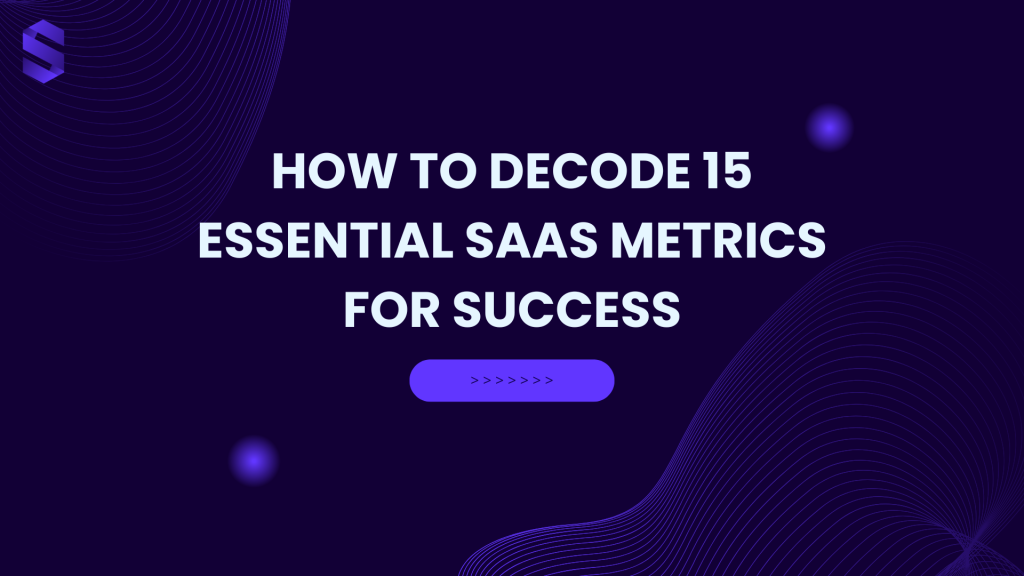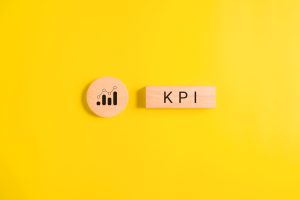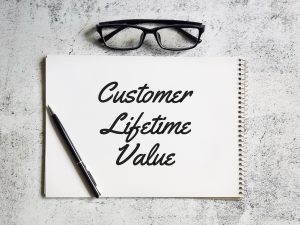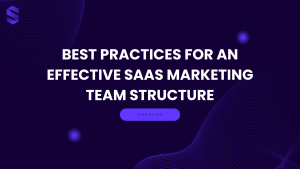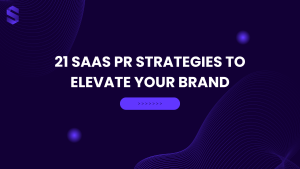In the fast world of Software as a Service (SaaS), knowing key metrics is key. These metrics give insights into your company’s performance and finances. They help you make smart choices and grow your business.
Subscription metrics are vital for any SaaS business. They track revenue and customer happiness. For example, Monthly Recurring Revenue (MRR) shows your steady income. It’s found by multiplying the number of customers by the average revenue per user.
Another important metric is Customer Acquisition Cost (CAC). It shows how much you spend on new customers. You want CAC to be less than Customer Lifetime Value (CLV). CLV is found by multiplying ARPU by the average customer lifespan.
Don’t overlook user engagement metrics. They’re key to knowing how customers use your product. For example, tracking active users shows how well your product is doing.
By focusing on these key SaaS metrics, you’ll improve your business. You’ll make your operations better, keep customers happy, and grow your business.
Key Takeaways
- MRR is a fundamental metric for predictable income
- CAC should be lower than CLV for profitability
- User engagement metrics predict future behavior
- The ideal LTV to CAC ratio is 3:1
- A good annual churn rate is between 5-7%
- Aim for a customer retention rate above 35%
Introduction to SaaS Metrics
SaaS metrics are key to knowing how your software business is doing. These saas kpis show how customers act, how money flows, and if you’re winning. They help you see where you’re doing well and where you need to get better.
What Are SaaS Metrics?
SaaS metrics are numbers that show different parts of your business. They include how much money you make regularly, how well you keep customers, and how financially strong you are. These numbers tell you if your business is growing, making money, and making customers happy.
Importance of Tracking Metrics
It’s very important to watch your SaaS metrics. This helps you make smart choices and grow your business. By looking at these numbers, you can:
- See patterns in how customers act
- Change your pricing to fit better
- Keep more customers
- Use your resources wisely
How Metrics Influence Strategies
SaaS metrics shape your business plans by giving you useful info. For example, if lots of customers leave, you might work on making them feel welcome sooner. If it costs too much to get new customers, you might change how you market.
| Metric | What It Measures | Target Range |
|---|---|---|
| Gross Margin | Profitability | 60-90% |
| Customer Retention Rate | Customer Loyalty | Above 90% |
| Net Promoter Score | Customer Satisfaction | Above 50 |
By focusing on these important metrics, you can make plans that help your SaaS business grow. You can make customers happier and make more money too.
Key Performance Indicators (KPIs) You Should Track
SaaS KPIs are key to knowing how your business is doing. They show you how much money you make and how customers interact with you. Let’s look at the important KPIs you should watch.
Revenue Related KPIs
Money matters a lot for your business. These KPIs help you see how well your business is doing financially:
- Monthly Recurring Revenue (MRR): Tracks your monthly subscription income
- Annual Recurring Revenue (ARR): Provides a yearly view of your recurring revenue
- Customer Lifetime Value (CLV): Estimates the total revenue from a customer over time
- Average Revenue Per Account (ARPA): Shows the average income per customer
Customer Interaction KPIs
It’s important to know how customers use your product. These KPIs give you clues about how users behave and if they’re happy:
- Customer Acquisition Cost (CAC): Measures the cost to acquire new customers
- Churn Rate: Indicates the percentage of customers who stop using your service
- Net Promoter Score (NPS): Gauges customer loyalty and satisfaction
- Product Signups: Tracks new user registrations
By focusing on these KPIs, you can make better choices. This helps keep customers and grows your SaaS business.
| KPI | Importance | Target Range |
|---|---|---|
| MRR Growth | Indicates revenue growth speed | 10-20% monthly |
| Customer Churn Rate | Shows customer loss rate | 5-7% annually |
| CAC | Reveals acquisition efficiency | 1/3 of CLV |
| NPS | Measures customer satisfaction | 30-50 (Good), 50+ (Excellent) |
Monthly Recurring Revenue (MRR) Explained
Monthly Recurring Revenue (MRR) is key for SaaS businesses. It shows the money made each month from active accounts. Knowing MRR helps see how well your company is doing and how it might grow.
How to Calculate MRR
To figure out MRR, use this simple formula:
MRR = Total Number of Active Accounts × Average Revenue Per Account (ARPA)
ARPA is found by dividing total recurring revenue by the number of active accounts. Don’t forget to leave out one-time fees like setup costs when you calculate MRR.
Importance of MRR Variability
MRR variability shows changes in your customers and prices. It’s important to watch different kinds of MRR:
- New MRR: Money from new customers
- Expansion MRR: Money from upgrades or add-ons
- Churn MRR: Money lost from cancellations
- Reactivation MRR: Money from customers who came back
Keeping an eye on these metrics helps you make smart choices about getting new customers, keeping them, and improving your product.
| MRR Type | Description | Impact |
|---|---|---|
| Gross MRR | Total monthly revenue before adjustments | Overall business size |
| Net MRR | Actual revenue after discounts and refunds | Real monthly earnings |
| Churn MRR | Revenue lost from cancellations | Customer retention health |
By looking at MRR trends, you can guess future growth. This helps you make smart financial choices and understand your SaaS business’s health.
Customer Acquisition Cost (CAC) Breakdown
Knowing your customer acquisition cost is key for SaaS companies to grow well. This metric shows how good your marketing is. It helps you make smart choices for growing your business.
What Is CAC?
Customer acquisition cost is the total cost to get a new customer. For SaaS companies, this includes money spent on marketing, sales, and getting new customers ready. It shows how well you’re adding new customers.
How to Calculate CAC
To find your CAC, use this simple formula:
CAC = Total Sales and Marketing Expenses / Number of New Customers Acquired
For example, if you spent $150,000 on sales and marketing and got 600 new customers, your CAC is $250.
Reducing Your CAC
Lowering your CAC can make your SaaS company more profitable. Here are some ways to do it:
- Make your marketing better
- Get your sales process to work better
- Start a referral program
- Keep your customers happy
- Use content marketing
By using these strategies, you can lower your customer acquisition cost. This will make your marketing more efficient.
| Industry | Average Organic CAC | Average Paid CAC | Combined Average CAC |
|---|---|---|---|
| B2B SaaS | $205 | $341 | $239 |
| IT and Managed Services | $325 | $840 | $454 |
| Financial Services | $644 | $1,202 | $784 |
Remember, look at your CAC with other SaaS metrics like customer lifetime value. This gives a full view of your business health. By working on lowering CAC, your SaaS company can grow well and succeed.
Struggling to optimize your SaaS metrics? Our content strategies help you attract high-value customers and improve retention. Let’s create a plan tailored to your goals—schedule a free consultation today!
Customer Lifetime Value (CLV) Insights
Knowing about customer lifetime value (CLV) is key for SaaS companies. CLV is the total money you can get from one customer over time. It helps you decide how to get and keep customers.
Understanding CLV
CLV shows how healthy your business is. It tells you how much each customer is worth over time. By focusing on CLV, you can find your best customers and serve them better.
Calculating Your CLV
To figure out CLV, use this simple formula:
CLV = ARPU * Gross Margin * Average Customer Contract Duration
ARPU means Average Revenue Per User. For better guesses, try advanced methods like cohort analysis or AI and machine learning.
CLV and Retention Strategies
Boosting CLV means keeping customers longer. Here are ways to do that:
- Offer up-sells and cross-sells
- Provide excellent customer support
- Implement personalization
- Develop sticky features
- Reassess your value proposition
Just keeping 5% more users can make profits jump by 25%. Work on making customers happy to keep your CLV high and your business growing.
| CLV Improvement Strategy | Potential Impact |
|---|---|
| Up-sells and Cross-sells | Increases ARPU |
| Excellent Customer Support | Reduces Churn Rate |
| Personalization | Enhances Customer Engagement |
| Sticky Features | Improves Retention |
| Value Proposition Reassessment | Attracts High-Value Customers |
Churn Rate: What You Need to Know
Churn rate is very important for your business. It shows how many customers you lose over time. Keeping a low churn rate helps your business grow and stay successful.
How to Measure Churn Rate
To find the churn rate, divide the number of lost customers by the total at the start. For example, if you lose 500 customers out of 5,000, your rate is 10%.
| Metric | Formula | Example | Benchmark |
|---|---|---|---|
| Customer Churn Rate | (Lost Customers / Total Customers) x 100 | (500 / 5,000) x 100 = 10% | 10% or lower |
| Lost Dollar Churn Rate | (Lost ARR / Total ARR) x 100 | ($25,000 / $500,000) x 100 = 5% | 10% or lower |
| Gross Dollar Churn Rate | ((Cancellations + Downgrades) / Total Revenue) x 100 | (($20,000 + $10,000) / $500,000) x 100 = 6% | 15% or lower |
Types of Churn
There are two kinds of churn: voluntary and involuntary. Voluntary churn is when customers choose to cancel. Involuntary churn is when they can’t pay or have technical issues. You need different plans for each.
Strategies to Reduce Churn
Lowering churn helps keep more customers. Good ways to do this include:
- Improving your product
- Offering great customer support
- Engaging with customers personally
- Starting with a strong onboarding process
- Listening to and using customer feedback
By working on these areas, you can make your customers happier and keep them longer. Remember, keeping churn low is a constant effort that changes as your customers do.
User Engagement Metrics
User engagement metrics are key for your SaaS product. They show how customers use your product. This helps you see its value and make it better. Let’s look at important user engagement metrics and how they help your SaaS business.
Active Users: Daily vs. Monthly
Active users are very important for your SaaS product. Daily Active Users (DAU) and Monthly Active Users (MAU) tell you how users interact. The DAU to MAU ratio shows how often users come back.
| Metric | Formula | Benchmark |
|---|---|---|
| Stickiness | DAU / MAU | 20% or higher |
| User Activity Rate | (Active users / Total users) * 100 | Varies by industry |
Session Duration’s Impact
Session duration shows how long users stay on your product. Longer sessions mean users find it valuable. Watch the average session length to find trends and areas to improve.
Average Session Length = Total duration of all sessions / Total number of sessions
Measuring Feature Usage
Feature usage metrics show which features are popular and which are not. This helps you know what to improve and teach users. Find out which features users like by calculating the feature adoption rate.
Feature Adoption Rate = (Users using a specific feature / Total users) * 100
Tracking these user engagement metrics gives you important insights. Use this info to make your product better, keep users, and grow your business.
Conversion Rate Metrics
Conversion rate is very important in the SaaS world. It shows how well you turn visitors into customers. It’s a key sign of how well you get new customers.
In the SaaS world, companies work hard to get better at this. The best ones spend up to 5% of their budget on making it better.
Defining Conversion Rate
Your conversion rate is how many visitors do what you want them to. This could be signing up for a free trial or becoming a paying customer. SaaS businesses have different rates based on their model.
- Free trials without credit card: 8-10%
- Free trials with credit card: 25%
- Freemium models: 1-10%
Improving Conversion Rates
To get better at converting visitors, try these things:
- Make your value clear
- Make your website easy to use
- Get better at SEO
- Make people feel like they need to act fast
Remember, the average website conversion rate for top B2B companies is 11. Try to match or beat this to stay ahead in the SaaS market.
Tracking Conversion Sources
Knowing where your conversions come from helps you use your resources better. Keep an eye on these important metrics:
| Metric | Average Rate |
|---|---|
| Activation rate | 37.5% |
| Feature adoption rate | 24.5% |
| Month-1 retention rate | 46.9% |
By focusing on these metrics, you can make your SaaS strategy better. This will help you grow more.
Customer Satisfaction (CSAT) Score
In the world of SaaS metrics, customer satisfaction is key. The Customer Satisfaction (CSAT) score shows how happy your customers are. It’s about how they feel about your product or service.
Importance of CSAT
CSAT is very important for SaaS businesses. High scores mean happy customers who stick with you. They also tell their friends and family about you.
Happy customers are 5 times more likely to recommend you. They are also 54% more likely to buy from you again.
How to Measure CSAT
You can measure CSAT with surveys. Ask customers to rate their experience on a scale, like 1-5 or 1-10. To find your CSAT score, divide the number of good answers by all answers. Then, multiply by 100.
| Industry | Average CSAT Score |
|---|---|
| SaaS | 65-70% |
| Overall | 75-85% |
Using CSAT for Improvement
Use CSAT to make your product and service better. Look at how customers feel and make changes. This could mean faster service or more ways to get help.
Also, make sure to talk to customers in a way that feels personal. Remember, for every complaint, 26 unhappy customers don’t say anything. So, listen to feedback to fix problems before they get worse.
Companies that always check CSAT do better in keeping customers, making them loyal, and growing their money.
Net Promoter Score (NPS)
Net Promoter Score (NPS) is a key customer loyalty metric for SaaS companies. It shows how happy your customers are and if your business will grow. It asks how likely your customers are to suggest your product or service to others.
Understanding NPS
NPS scores range from -100 to 100. It sorts people into three groups:
- Promoters (score 9-10): Loyal enthusiasts
- Passives (score 7-8): Satisfied but unenthusiastic
- Detractors (score 0-6): Unhappy customers
To find your NPS, subtract Detractors from Promoters. The average in SaaS is 31. Scores over 50 are very good.
Effective Use of NPS
To get the most from NPS:
- Follow up with respondents to address concerns
- Leverage promoters for referrals and testimonials
- Use feedback to improve your product and service
Remember, NPS scores can change due to many things like competition and global events.
NPS as a Growth Indicator
A high NPS means your business might grow a lot. It shows how happy and loyal your customers are. By tracking and improving your NPS, you can keep more customers and grow through word-of-mouth.
Even though NPS is important, it’s not the only way to measure customer happiness. Use it with other metrics to understand your business better.
Burn Rate: A Vital Financial Metric
In the world of SaaS, burn rate is very important. It shows how fast a company uses its money before making more. Knowing and controlling your burn rate helps your company stay strong and stable.
Understanding Burn Rate
Burn rate is found by subtracting what you spend from what you make. It’s a big help in managing money. It tells you how long you can keep going without more money.
Monitoring Your Burn Rate
It’s important to watch your burn rate closely. Keep an eye on what you spend and make each month. This helps you:
- Know how long your money will last
- Make smart choices about spending and investing
- Find ways to cut costs
Strategies to Manage Burn Rate
Managing your burn rate well is key for growing. Here are some tips:
- Make more money by selling more and keeping customers
- Make your operations more efficient without losing quality
- Use flexible staff to save money
- Get more money when you need it to keep going
By paying attention to these financial metrics and using smart money management, you can lower your burn rate. This will help your company grow and succeed in the long run.
Customer Retention Rate (CRR)
Customer retention rate is very important for SaaS companies. It shows how many customers keep using your product. Knowing and improving your CRR helps your business grow.
Defining CRR
CRR is found by this formula: ((Customers at period end – New customers acquired) / Customers at period start) x 100. For example, if you start with 200 customers, add 50, and end with 230, your CRR is 90%. A good monthly rate for SaaS is about 95%.
How to Improve Retention
To increase your CRR, try these:
- Deliver consistent value
- Provide excellent customer support
- Keep improving your product
- Engage users with helpful content and tutorials
- Listen to and use customer feedback
Importance of Retention for Growth
High retention rates are key for SaaS growth and profit. Better CRR means more value from customers, less cost to get them, and steady income. Focusing on retention builds a strong base for success.
Keeping customers is cheaper than getting new ones. By focusing on CRR, you’re investing in your company’s future.
Funnel Metrics: A Closer Look
Funnel metrics are key to tracking your SaaS business’s success. They show how people move from first learning about your product to becoming loyal users.
Stages of the Funnel
The SaaS marketing funnel has four main stages: awareness, interest, consideration, and decision. Each stage needs special strategies to help people move forward.
- Awareness: Measure website visits and social media engagement
- Interest: Track qualified leads and demo requests
- Consideration: Monitor lead velocity rate and conversion rates
- Decision: Evaluate monthly recurring revenue (MRR) and customer acquisition cost (CAC)
Tracking Funnel Effectiveness
To see how well your funnel works, look at conversion rates between stages. For example, how many website visitors become qualified leads or demos turn into deals. These numbers help find where your sales process might be stuck.
Optimizing Each Stage
Improving your funnel’s performance is crucial. Look at how users act at each stage to find ways to get better. Some ways to do this include:
- Refining your messaging to better resonate with your target audience
- Streamlining the user experience to reduce friction
- Implementing personalized content to increase engagement
- Conducting A/B tests to optimize conversion rates
By working on these funnel metrics and making each stage better, you can help your SaaS business grow. This also makes your customers happier.
Growth Rate: Measuring Progress
Growth rate is a key SaaS metric for tracking business growth. It shows how your business is doing over time. It helps you make smart choices for your company’s future.
Calculating Growth Rate
To find your SaaS growth rate, use this formula:
Growth Rate = (Final Value – Initial Value) / Initial Value
For example, if your revenue went from $100,000 to $128,000 in a year, you grew by 28%. This formula works for many metrics, like MRR and ARR.
Factors Influencing Growth Rate
Many things affect your SaaS growth rate:
- Market conditions
- Product-market fit
- Marketing effectiveness
- Customer acquisition cost (CAC)
- Customer lifetime value (CLV)
Knowing these factors helps you find areas to improve and use your strengths well.
Setting Realistic Growth Goals
When setting growth targets, think about:
- What you’ve done before
- The market’s potential
- What resources you have
- What others in your industry are doing
Go for big but doable goals. This will help your business grow without using too many resources.
| Growth Rate | Description | Example Target |
|---|---|---|
| Slow | Steady, sustainable growth | 5-10% annually |
| Moderate | Balanced growth and stability | 10-20% annually |
| Rapid | Aggressive expansion | 20-50%+ annually |
By watching your growth rate and setting smart goals, you’ll lead your SaaS business to success.
Benchmarking SaaS Metrics
SaaS benchmarking is key to knowing where your company stands in the market. It lets you see how you compare to others. This way, you find out where you can get better and where you can grow.
Importance of Benchmarking
Benchmarking shows how you stack up against rivals and industry standards. It shows your strong points and weak spots. This helps you make smart choices for your SaaS business.
How to Benchmark Your Metrics
To benchmark well, do these things:
- Look at industry reports
- Join surveys
- Talk to other companies
- Check out what your competitors do
Key Industry Standards
Here are some important metrics for SaaS companies:
| Metric | Benchmark |
|---|---|
| ARR Growth (under $1M revenue) | 68% |
| ARR Growth (over $1M revenue) | 45% |
| CAC Payback | 6 months |
| LTV:CAC Ratio | 6:1 |
| Annual Churn Rate | 5.2% |
Keep in mind, these benchmarks change based on your sector and size. They’re more like guidelines than rules.
Checking your metrics against these standards often keeps you ahead. It also shows where you can get better. Focus on the metrics that match your business goals and where you are now.
Conclusion: Making Metrics Work for You
In the booming SaaS industry, it’s key to understand and use important metrics. You’ve learned about essential SaaS metrics. These can help your business grow and make smart decisions.
Recap of Key Metrics
Metrics like Monthly Recurring Revenue (MRR) and Customer Acquisition Cost (CAC) are important. They show how well your SaaS business is doing. The Rule of 40 and Lifetime Value (LTV) to CAC ratio help check if your business is growing right.
Next Steps for Metric Tracking
To use these SaaS metrics well, get good analytics tools and set up regular reports. Choose metrics that match your business goals. Use frameworks like Objectives and Key Results (OKR) to help grow.
Watch metrics like Net Revenue Retention (NRR) and Net New Annual Recurring Revenue (ARR). They show if you’re keeping customers and making more money.
Cultivating a Metrics-Driven Culture
Teach your team about the value of these metrics. Make sure data is easy to find and use every day. This way, you’ll keep improving and growing your SaaS business.
Ready to grow your SaaS with content that drives results? Partner with us to turn your metrics into actionable strategies. Book your free strategy session now!
FAQ
What are SaaS metrics?
SaaS metrics are numbers that show how well a Software as a Service business is doing. They help understand customer behavior, how money is spent, and success. This helps companies make smart choices and work better.
Why are SaaS metrics important?
SaaS metrics are key for checking how well a SaaS business is doing. They give insights into growth, customer actions, and money use. This helps make smart decisions, grow steadily, and work better.
What are some key SaaS metrics to track?
Important SaaS metrics include Monthly Recurring Revenue (MRR), Customer Acquisition Cost (CAC), and Customer Lifetime Value (CLV). Also, Churn Rate, Net Promoter Score (NPS), and Customer Retention Rate (CRR) are crucial. These metrics give a full view of your business’s health and growth chance.
How do you calculate Monthly Recurring Revenue (MRR)?
To find MRR, multiply the number of customers by the Average Revenue Per User (ARPU). This shows the steady money coming in from subscriptions.
What is Customer Acquisition Cost (CAC)?
Customer Acquisition Cost (CAC) is the cost to get a new customer. It includes marketing and sales costs. To find CAC, divide total sales and marketing costs by the number of new customers in a time period.
How can I reduce my Customer Acquisition Cost?
To lower CAC, improve your sales and marketing plans. Focus on keeping customers. Use cheap ways to get customers, like content marketing or referrals.
What is Customer Lifetime Value (CLV)?
Customer Lifetime Value (CLV) is the total money a business gets from one customer over time. It’s found by multiplying ARPU by the customer’s life in months.
How can I improve my Customer Lifetime Value?
To boost CLV, make users happy and keep them loyal. Stay ahead in value. Improve your product, offer great support, and give personalized experiences.
What is churn rate and how is it calculated?
Churn rate is the percentage of lost customers in a time. To find it, divide lost customers by total customers at the start of the time.
How can I reduce my churn rate?
To lower churn, make your product better and improve the customer experience. Offer good support and personal touches. Listen to and act on customer feedback.
What is Net Promoter Score (NPS)?
Net Promoter Score (NPS) shows customer loyalty by asking if they’d recommend your product. It’s found by subtracting detractors from promoters.
How can I use NPS effectively?
To use NPS well, follow up with people who answered. Fix issues from detractors. Use what you learn to make your product and service better.
What is burn rate?
Burn rate is how fast a company uses its money. It’s key for planning and staying afloat, especially for startups and growing SaaS companies.
How can I benchmark my SaaS metrics?
To compare your SaaS metrics, look at industry reports and surveys. Talk to other companies. Compare your numbers to others to find ways to get better.

